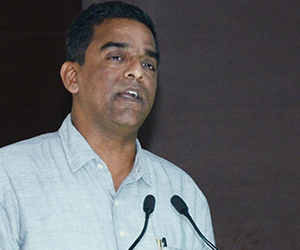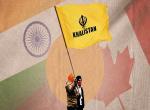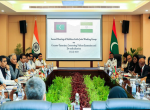As more details emerge on the Pathankot terror strike and India's response, it is becoming increasingly clear that the quick decision-making at the highest levels of the country's security apparatus saved a repeat of a Mumbai-like carnage at the frontline airbase. Information pieced together from multiple conversations I have had with security officials also indicates excellent coordination at the field level, although many half-baked and ill-informed reports have appeared to the contrary.
Although there were generic intelligence reports about infiltration of terrorists into Punjab since the evening of December 31, 2015, the actual story begins post-lunch on New Year's Day when the general intelligence gets crystallised into a specific alert that the target definitely is the Pathankot air base. This is what happens in rapid succession after that:
3 pm: National Security Adviser Ajit Doval convenes a meeting to decide on the next course of action. In attendance are the Army chief, General Dalbir Singh Suhag, the Air Force chief, Air Marshal Arup Raha, and chiefs of intelligence agencies.
4 pm: Meeting concludes with specific tasks allotted to each stakeholder. Army moves nine columns (nearly 1,000 men) from nearby cantonments into the Pathankot airbase.
The National Security Guard is told to get ready with two teams to be flown out from Manesar near Delhi as soon as possible.
6 pm: Army columns start arriving into the air base and get deployed at key locations. Their main task: To secure the air assets in the technical area (fighter aircraft, helicopters, missiles, ammunition dump, etc) and guard the residential quarters that house nearly 3,000 families within the base.
In Delhi NSG teams emplane for Pathankot. They are being pre-positioned in case any hostage situation develops or the terrorists get into houses or built-up areas.
9 pm: The technical area is sealed; NSG gets deployed. The wait and search for terrorists begins. There is no definite information on their exact location.
January 2, 3.30 am: Around 3 am, an Air Force platform equipped with infra red night vision detects movement of terrorists. A Garud commando rushes to confront them and gets shot. As their movement is tracked gunfire is heard; the terrorists have emerged from hiding and have entered the cookhouse of the Defence Security Corps personnel. Four unarmed personnel of the force get killed instantly. One of their unarmed colleagues runs after a terrorist, turns his gun on him and kills him before being shot by other terrorists.
Moments later, a Garud commando confronts the other terrorists, gets shot.
Daybreak: Hunt begins for the well-armed terrorists and a cordon is thrown around a small area of 250 metres by 250 metres. They are suspected to have entered into a building.
By evening, four terrorists are eliminated, one by one, by the army troops who come into action immediately.
After nightfall, the focus area is kept under surveillance with floodlights keeping the area lit. Intermittent firing continues. The advantage is now with the security forces; they have confined the terrorists to a small patch and have the luxury of time to eliminate them in daylight.
Next day the remaining two terrorists are eliminated, but not before a lieutenant colonel dies during the removal of the body of a slain terrorist.
Key takeaways: In the absence of key ministers like Rajnath Singh (home) and Manohar Parrikar (defence) from the capital on January 1, there was no time to lose, to wait for the Cabinet Committee on Security to meet.
Instant decision had to be taken, which was done by the NSA in consultation with the key stakeholders. The swift action saved the day in Pathankot.
Moreover, the terrorists were eliminated before they could achieve their key objective of destroying the air assets or take hostages in the base.
The criticism that the operation took too long is a matter of opinion. In any such operation, the vital objective is to deny the terrorists their main aim and minimise your own casualty besides protecting hard assets. In this operation all these three objectives were met. If the terrorists were neutralised without losing any further men, it is to the credit of the security forces and their coordination on the ground, notwithstanding the time they took.
There will, of course, be questions asked about the ease with which the terrorists managed to cross the border and also get into the airbase without being detected, but that is a matter of review and revamp.
For the moment, all key players -- from NSA Ajit Doval to senior officers, from the brave but unheralded men of the DSC to the ground troops of the Indian Army, the Garud commandos and the NSG -- need to be commended for a clinically executed anti-terror operation.
Published Date: 8th January 2016, Image Source: http://indianexpress.com
(Disclaimer: The views and opinions expressed in this article are those of the author and do not necessarily reflect the official policy or position of the Vivekananda International Foundation)










Post new comment